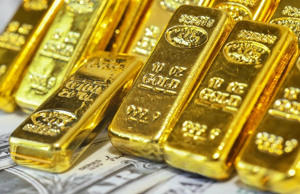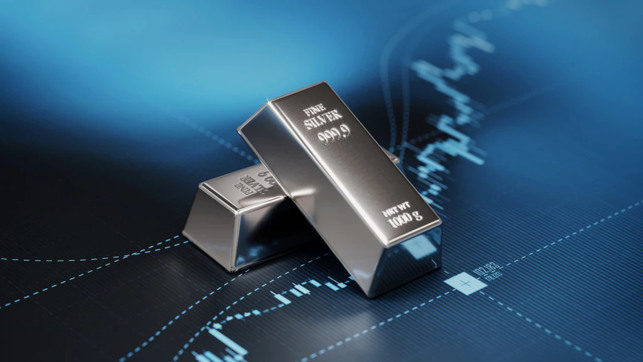Tavex uses cookies to ensure website functionality and improve your user experience. Collecting data from cookies helps us provide the best experience for you, keeps your account secure and allows us to personalise advert content. You can find out more in our cookie policy.
Please select what cookies you allow us to use
Cookies are small files of letters and digits downloaded and saved on your computer or another device (for instance, a mobile phone, a tablet) and saved in your browser while you visit a website. They can be used to track the pages you visit on the website, save the information you enter or remember your preferences such as language settings as long as you’re browsing the website.
| Cookie name | Cookie description | Cookie duration |
|---|---|---|
| tavex_cookie_consent | Stores cookie consent options selected | 60 weeks |
| tavex_customer | Tavex customer ID | 30 days |
| wp-wpml_current_language | Stores selected language | 1 day |
| AWSALB | AWS ALB sticky session cookie | 6 days |
| AWSALBCORS | AWS ALB sticky session cookie | 6 days |
| NO_CACHE | Used to disable page caching | 1 day |
| PHPSESSID | Identifier for PHP session | Session |
| latest_news | Helps to keep notifications relevant by storing the latest news shown | 29 days |
| latest_news_flash | Helps to keep notifications relevant by storing the latest news shown | 29 days |
| tavex_recently_viewed_products | List of recently viewed products | 1 day |
| tavex_compare_amount | Number of items in product comparison view | 1 day |
| Cookie name | Cookie description | Cookie duration |
|---|---|---|
| chart-widget-tab-*-*-* | Remembers last chart options (i.e currency, time period, etc) | 29 days |
| archive_layout | Stores selected product layout on category pages | 1 day |
| Cookie name | Cookie description | Cookie duration |
|---|---|---|
| cartstack.com-* | Used for tracking abandoned shopping carts | 1 year |
| _omappvp | Used by OptinMonster for determining new vs. returning visitors. Expires in 11 years | 11 years |
| _omappvs | Used by OptinMonster for determining when a new visitor becomes a returning visitor | Session |
| om* | Used by OptinMonster to track interactions with campaigns | Persistent |
| Cookie name | Cookie description | Cookie duration |
|---|---|---|
| _ga | Used to distinguish users | 2 years |
| _gid | Used to distinguish users | 24 hours |
| _ga_* | Used to persist session state | 2 years |
| _gac_* | Contains campaign related information | 90 days |
| _gat_gtag_* | Used to throttle request rate | 1 minute |
| _fbc | Facebook advertisement cookie | 2 years |
| _fbp | Facebook cookie for distinguishing unique users | 2 years |
Gold to Dow Ratio: When is Gold Overvalued or Undervalued? When to Sell?

What is the fair price of gold at this point in time? One way to find out is to compare gold to other asset classes. Be it stocks, real estate, bonds or other major asset classes. Such a comparison will help you understand whether gold is overvalued or undervalued at a given point in time.
In the following article, we will look at one metric, which is the ratio of the US Dow Jones stock index to the price of an ounce of gold.
While the “fair prices” of stocks and bonds can be calculated using cash flow models created by economists, the situation is a little more complicated for gold. Since gold does not generate cash flows (such as dividends or interest) and is primarily a reserve asset that retains its value over the long term, other indicators must be used to analyze the price level.
The prices of various assets measured in gold are very suitable, because in this case, fluctuations in the value of the currency are excluded from the formula. In today’s monetary system, the prices of essentially all assets increase in the long term, because money creation works in such a way that currency loses its value consistently and over the long term.
Therefore, it is worth comparing the assets themselves. For example, how many ounces of gold did the average home cost 50 years ago? How much gold does the average home cost today? These indicators provide a better overview of changes in the purchasing power of gold.
Today we look at how the US stock markets have fluctuated, measured in ounces of gold. The chart below shows the relationship between the Dow Jones index, which is a composite of 30 large companies, and gold. The Dow Jones 30 is one of the oldest and most well-known stock market indices. It tracks the movements of the shares of 30 large US companies. The index includes companies such as Apple, Coca-Cola, and Microsoft, among others.
The graph shows how many ounces of gold it takes to buy one share of the Dow Jones Industrial Average. Currently, an ounce of gold costs $3,317 and the Dow Jones Industrial Average is trading at 44,814.
44,814/3,317 = 13.5
So one Dow Jones share is worth 13.5 ounces of gold.
It should be noted that the price of a Dow Jones share does not include dividends, or potential cash flow. It is only the cumulative change in the value of the shares.
Large Cycles
The graph clearly shows that since the beginning of the 20th century, the Dow Jones to gold ratio has moved in very large and deep cycles, the amplitude of which has become increasingly larger.
The Dow-to-gold ratio reached its absolute low in January 1980, reaching 0.99. Perhaps for the first time in history, an ounce of gold cost more than one Dow share. Over the next 20 years, stocks rose in price almost 50 times (!) in terms of gold. This ended in early 2000, when the technology bubble in the US stock markets burst and gold began a years-long rapid rise. Investors who exchanged their stocks for gold at the right moment (and vice versa in the previous cycle) were able to grow their assets by several dozen times.
The ratio reached 6 by 2011, but then started to rise again because the massive money printing by central banks did not bring the big price increase that many had expected. Rather, this money found its way into the stock markets and boosted the prices of stocks. Gold entered a bear phase.
Looking at recent history, the ratio peaked in 2019. At that time, one Dow Jones share cost 20.5 ounces of gold. Today, it has fallen to 13.5 – above the historical median level. Over the past few years, the ratio has fallen sharply due to the rapid rise in gold prices.
Is gold overvalued or undervalued?

Judging by the ratio, gold is currently slightly undervalued relative to stocks. However, I expect the ratio to decline further. It is worth considering exchanging gold for stocks if the ratio drops below 5. However, it is wise to do this in parts, not all at once. It is not worth liquidating the entire gold position at this level.
While a drop to 5 would mean that gold is somewhat overvalued relative to stocks, the ratio is likely to fall significantly lower than that. I believe we are currently in the early to mid-stages of a major bull cycle in precious metals, which could see the gold-to-Dow Jones ratio in the 0.5-3 range in the future.
The current bull run for precious metals will be similar in scope to the 1970s, as the world continues to face stagflation (stagnant economic growth but high inflation). The world’s debt burden has risen above World War II levels, and deteriorating budgets mean that debt relief is likely to be achieved through currency dilution. This, in turn, means low productivity and high inflation – two key factors that characterize stagflation. This is an extremely favorable environment for the price of gold, as it is a traditional reserve asset that cannot be printed.
What could be the peak price of gold based on the ratio?

One could expect the ratio to fall significantly lower. Since the currency problems are actually even more serious than in the 1970s, the ratio could fall below 1. Given the current level of the Dow, this suggests a peak in the cycle for gold prices of $40,000-50,000 per ounce (the Dow is currently trading at 44,814).
Such a price target sounds absurd at the moment, but it must be taken into account that in such a case the price of gold would also be in a total bubble and extremely overvalued relative to stocks. Since the ratio reached 1-2 in both 1932 and 1980, it is not at all excluded that this time it will be the same. With such a low ratio, it probably makes sense to exchange the lion’s share of gold for other asset classes.
It is also important to note that this is just one indicator on which to base an assessment of the fair value of gold. When making buying and selling decisions, you should also base your decisions on other indicators, which I will definitely cover in future analyses.
However, for those who invest in gold and actively manage their investment portfolio, it is worth keeping an eye on the ratio.

















